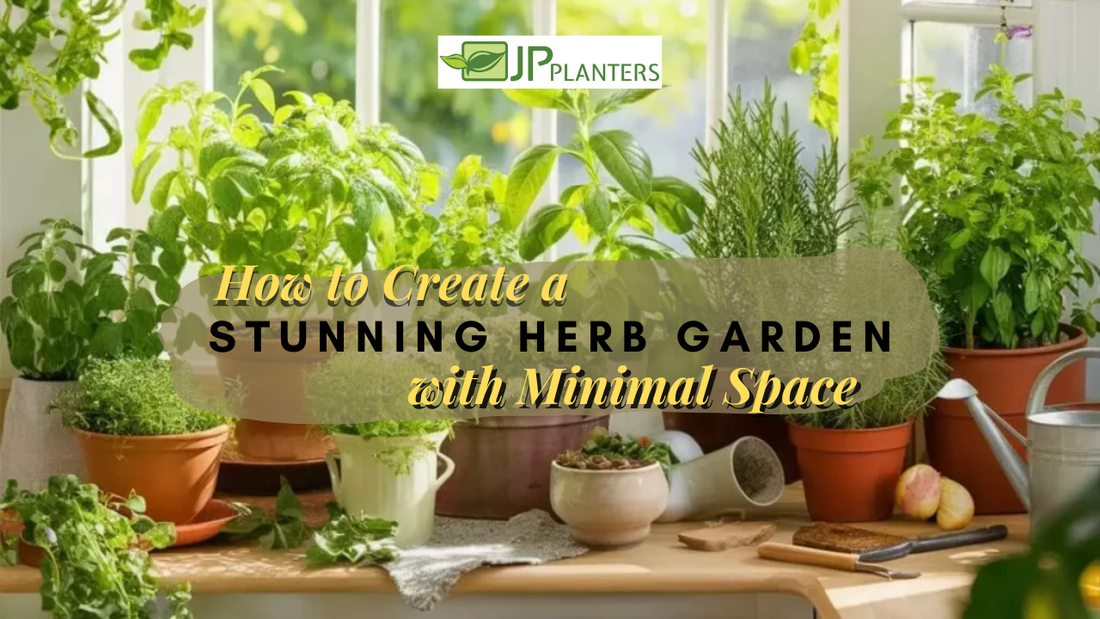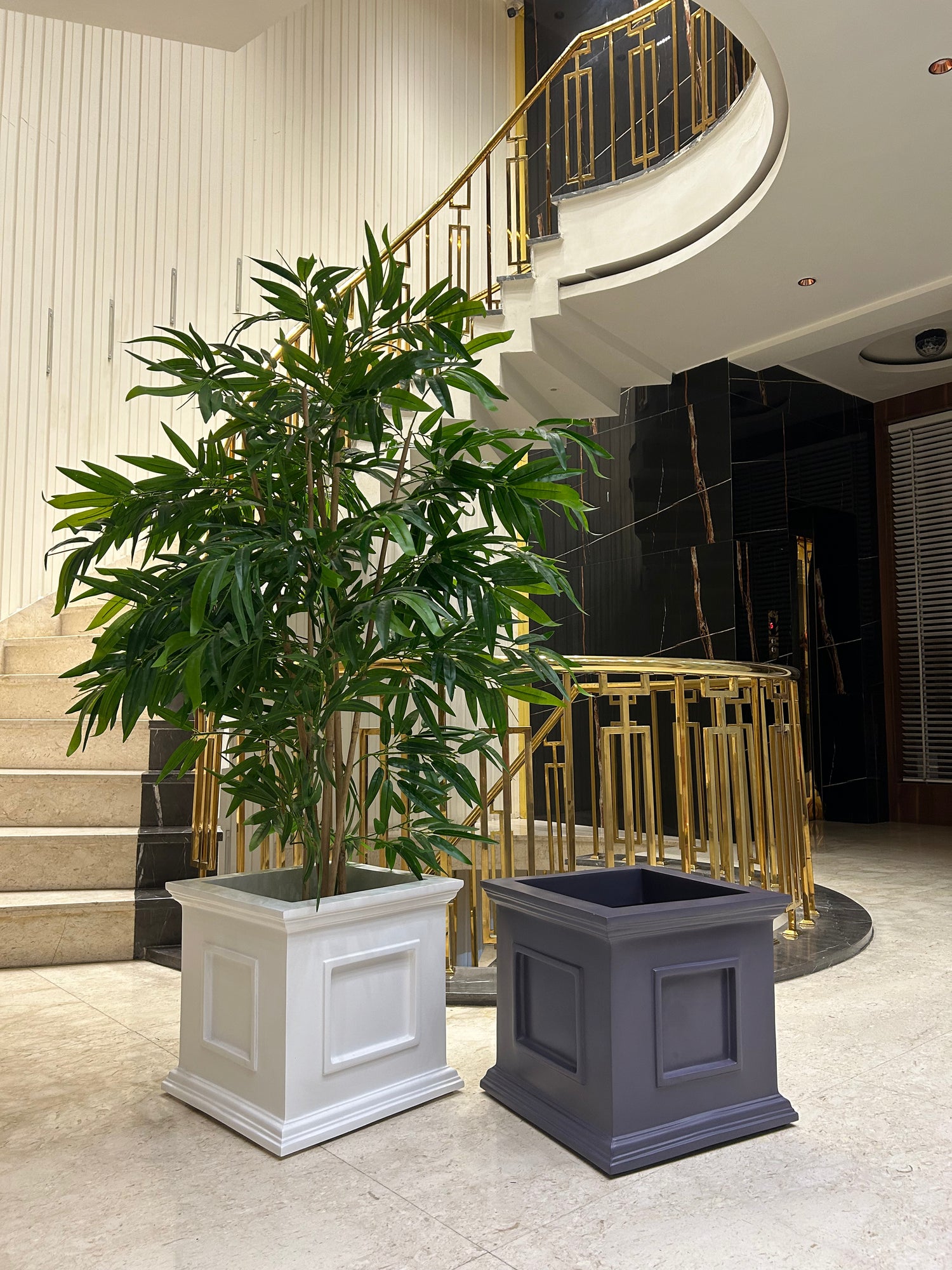
How to Create a Stunning Herb Garden with Minimal Space
Share
Herb gardening has become increasingly popular, especially for those with limited space, such as apartment dwellers or urban gardeners. The beauty of an herb garden is that it not only offers fresh, aromatic herbs for cooking but also enhances the aesthetic appeal of your space. Additionally, creating an herb garden is a fantastic way to utilize small spaces like balconies, window sills, or cozy indoor corners, transforming them into green sanctuaries. This guide will walk you through everything you need to know about creating a beautiful and productive herb garden in a minimal space.
Step-by-Step Guide
Section 1: Choosing the Right Spot
Selecting the ideal spot for your herb garden is crucial. Most herbs thrive in sunlight, requiring at least 6-8 hours of direct or indirect light daily. Therefore, when considering a small space, think about areas that receive ample sunlight:
- Balcony: Balconies are perfect for herb gardens. They often receive adequate sunlight and provide a natural setting for your plants. If you’re thinking of gardening in a balcony, choose a spot that isn't obstructed by other structures or plants.
- Window Sill: If you don’t have a balcony, window sills can be a great alternative, especially those facing south or west. A sunny windowsill offers the light exposure needed for most herbs to grow well.
- Indoor Spaces with Artificial Light: For those without access to natural sunlight, indoor gardening with grow lights is an effective solution. LED grow lights mimic the sun's spectrum and can help your herbs flourish.
Section 2: Selecting the Best Planters
Choosing the right planters is key to a thriving herb garden, particularly in small spaces. Here are some ideal options:
- FRP Planters: FRP Planters (Fiberglass Reinforced Plastic) are perfect for small spaces due to their durability, lightweight nature, and sleek designs. They come in various shapes and sizes, making them versatile for both balcony and indoor gardening. FRP planters are resistant to weather changes, ensuring your herbs stay protected year-round.
- Planters with Pots: Using planters with pots is a smart strategy for small spaces. These planters offer built-in compartments for multiple herbs, allowing for diverse planting in one spot. They're also aesthetically pleasing, adding a decorative element to your space.
- Planters for Indoor Plants: For indoor herb gardening, look for planters for indoor plants that offer good drainage and are made from materials like ceramic or terracotta. They help maintain moisture levels while preventing root rot.
When selecting planters, consider vertical gardening solutions, such as tiered planters or hanging pots. These options maximize vertical space, which is especially valuable in compact areas.
Section 3: Picking the Right Herbs
Not all herbs are suitable for small-space gardening. Here are some of the best herbs to consider:
- Basil: Loves full sun and can be grown indoors or on a balcony. It's perfect for cooking and adds a lovely fragrance to your space.
- Mint: Thrives in partial shade and can grow well in containers. Mint spreads quickly, so it’s best to keep it in a pot to prevent it from overtaking your garden.
- Parsley: Adaptable to both sun and partial shade. Parsley is a biennial herb, meaning it will grow for two years before needing replacement.
- Thyme: Requires full sun and grows well in small containers. It’s a hardy herb, perfect for beginners.
- Chives: Prefers full sun but can tolerate some shade. It grows well in shallow containers and is an excellent addition to many dishes.
- Coriander (Cilantro): Prefers cooler weather and partial shade. It's a fast-growing herb that does well in small pots.
Consider your environment when choosing herbs. For instance, if you have a sunny balcony, opt for sun-loving herbs like basil and thyme. If you’re using a window sill with limited light, go for shade-tolerant herbs like parsley and chives.
Section 4: Soil, Water, and Light Requirements
Creating the right growing conditions for your herbs is essential:
- Soil Mix: Use a well-draining potting mix designed for herbs. A mix of compost, coconut coir, and perlite works well, providing nutrients while ensuring good drainage.
- Watering Frequency: Most herbs prefer slightly moist soil. Water them when the top inch of the soil feels dry. Overwatering can lead to root rot, so it’s crucial to monitor the soil moisture.
- Light Conditions: As mentioned earlier, most herbs need at least 6-8 hours of sunlight or equivalent grow light exposure. Consider rotating your planters to ensure even light exposure.
Section 5: Arranging Your Planters for Maximum Impact
Making the most of limited space requires creativity in arranging your planters:
- Vertical Gardening: Use vertical space by installing shelves or hanging planters. Vertical gardening is perfect for gardening in a balcony where floor space is limited.
- Grouping Plants: Arrange your planters with pots in groups based on their light and water needs. This makes watering and care easier while creating a visually appealing arrangement.
- Tiered Planters: Stack planters in a tiered arrangement to make use of both vertical and horizontal space. Tiered planters can hold multiple herbs, maximizing your gardening potential in a small area.
- Mobile Planters: Use planters on wheels for flexibility. These can be moved easily to catch the sun or be brought indoors during harsh weather conditions.
Section 6: Maintenance Tips for a Thriving Herb Garden
Keeping your herb garden healthy requires regular maintenance:
- Pest Control: Inspect your herbs regularly for pests such as aphids or spider mites. Use natural remedies like neem oil or insecticidal soap to control them.
- Trimming and Harvesting: Regularly trim your herbs to encourage growth and prevent them from becoming leggy. Harvesting frequently not only provides you with fresh herbs but also keeps the plants healthy.
- Seasonal Adjustments: Depending on your climate, you may need to adjust watering and light exposure seasonally. In colder months, consider bringing your herbs indoors or using a grow light.
Highlight Your Product Range
To make your herb garden truly stand out, consider our range of high-quality planters:
- Fiberglass Planters: Lightweight, durable, and available in a variety of colors and designs, fiberglass planters are perfect for both indoor and outdoor settings.
- Corten Steel Planters: These planters offer a unique, rustic look while being resistant to weather conditions. They are ideal for creating a stylish herb garden on a balcony.
- Other Varieties: From sleek modern pots to decorative planters with intricate designs, our collection caters to all aesthetic preferences and space constraints.
Our planters not only enhance the look of your herb garden but also provide the perfect environment for healthy plant growth. Choose from our range to create an attractive and efficient herb garden setup.
Conclusion
Creating a stunning herb garden in minimal space is both a rewarding and practical way to enjoy fresh herbs year-round. With the right planters, such as FRP Planters, planters for indoor plants, and planters with pots, and careful planning, you can turn any small space into a lush, green haven. So, why wait? Start your herb gardening journey today and enjoy the benefits of fresh, home-grown herbs right from your balcony or kitchen window!




